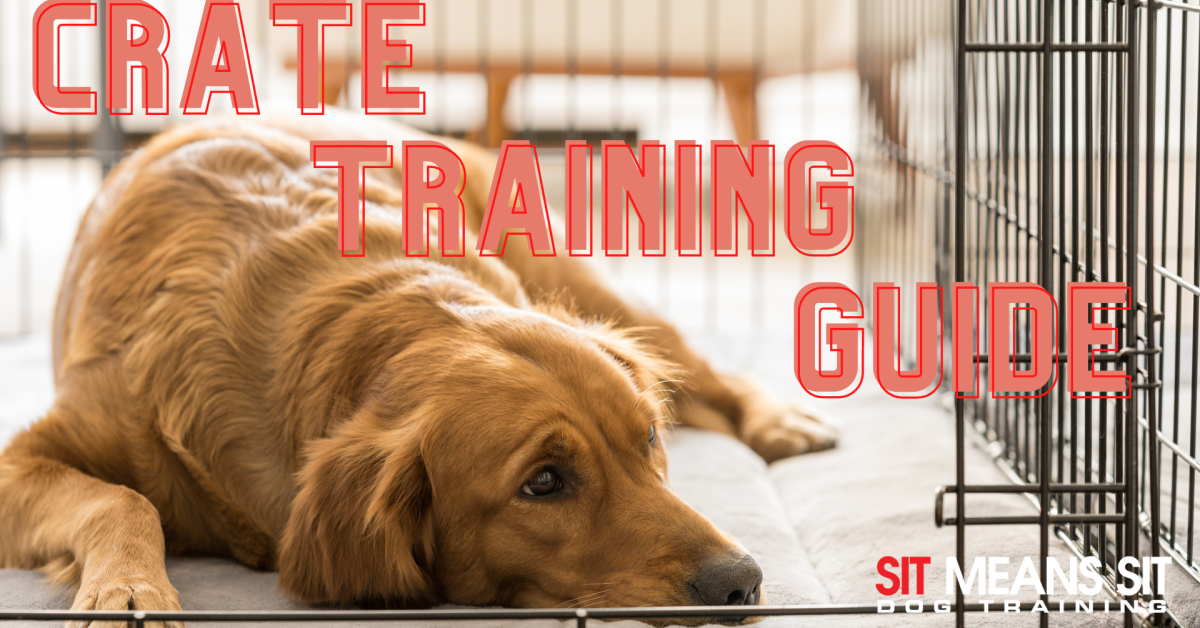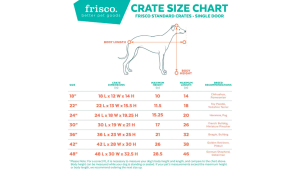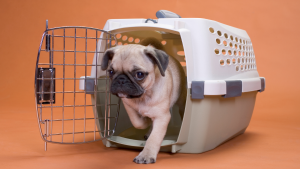
A Guide on Crate Training Your Dog
Crate training is unbearable but inevitable. According to the American Kennel Club, dog crates are beneficial to keep your pet safe while you are out of the home or cannot monitor their activity. Dogs are naturally used to having a small, personal space for them to retreat. It is recommended to crate train your puppy within the first few months so it will be a more effective practice.
Choosing the Correct Crate
Chewy, a pet supplies company, describes your pup’s crate as their “den of zen” and outlines how to find the correct size for Fido. Crate sizes vary based on the size and breed of your doggo, depending most on body length and height. Crates need to be just a few square inches larger than your pet, they should have room to walk in and turn around. Chewy recommends taking Fido’s measurements and then adding 4 inches. The chart below, from Frisco Pet Goods, gives an example of how crate sizing works. Puppies will need a small kennel at first, but as they grow so will their bed. Consider looking into expandable crates or ones with dividers that will last throughout their growing periods.

Positive Association
One of the biggest problems with crate training is when pet owners use the crate as a punishment. The more they associate the crate with positivity, the more they will feel relaxed in the kennel. Giving praise or treats for getting into the crate is a great way to build that mindset. Sending pets to a crate when upset creates a negative view and will cause resistance to training.
Comfy Additions
When deciding whether or not to add blankets or towels, first see how your pet responds outside of the crate. If they use the fabric to play tug-of-war or start shredding it, that probably isn’t the best thing to leave them with for various hours unattended. Fabric shreds are a choking hazard. Another option would be to add a thin dog bed or crate mat, both of which are more durable. Deciding what to give your pet in their crate is trial and error, every puppy is different.
Keep Track of Time
Make sure you never leave Fido in the crate past six hours. They need to have access to the bathroom and drink water every six hours to ensure they don’t potty in their bed or attempt to break out on their own. Try to avoid leaving puppies in crates overnight because they will most likely not be able to hold their bladder that long.
Staying Patient
Crate training typically takes about two to six months of ups and downs. Routines are most effective for dogs to pick up on and keeping a steady reward system will teach them these important lifelong skills.
Crate training will be stressful but successful in the end! Every pup has different behaviors and attitudes, it’s a matter of having a good routine and positive mindset to get them to enjoy going in their kennel.

